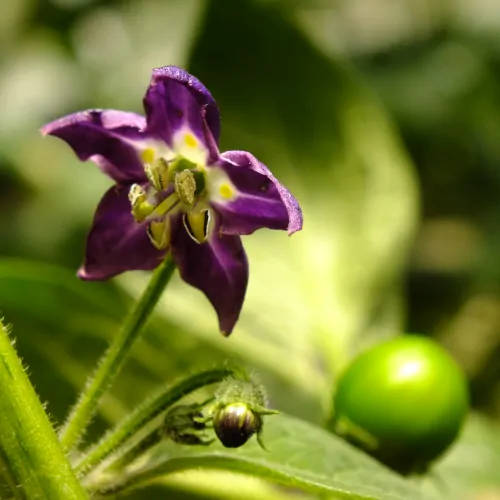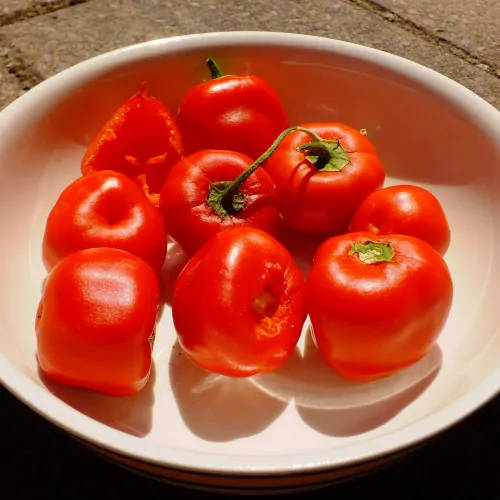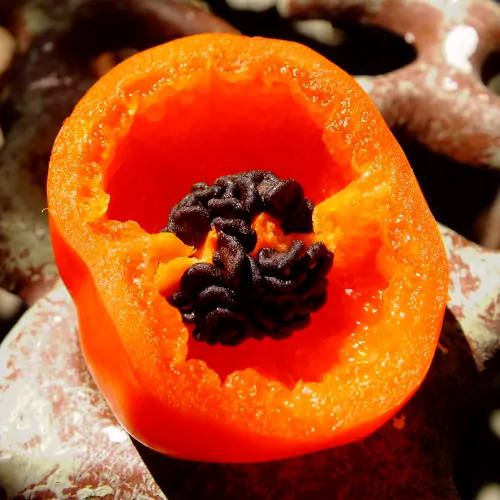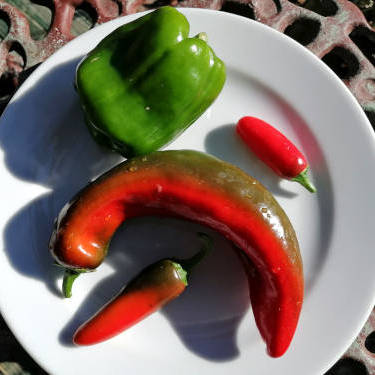Summary
The Rocoto Manzano chilli, also known simply as Rocoto, is a unique and versatile chilli pepper variety with several distinctive characteristics and benefits:
-
Hardiness: Rocoto peppers are hardy perennials, capable of surviving for multiple years under the right conditions. This trait sets them apart from many other chili pepper varieties, which are typically grown as annuals.
-
Origin and Appearance: Originating from the Andean regions of Bolivia and Peru, Rocoto peppers are recognized for their apple-like shape. They often have thick flesh and come in various colors, including red, yellow, orange, and green. The black seeds inside the fruit are also a distinguishing feature.
-
Size and Yield: Rocoto plants can grow impressively large, reaching heights of up to 5 meters. Despite their size, they are prolific producers, bearing hundreds of fruits each season. These fruits typically measure 5-7cm in length.
-
Flavor Profile: The flavor of Rocoto peppers is characterized by a unique blend of sweetness and spiciness. While they are undeniably hot, they also possess a pleasant sweetness that sets them apart from other chili varieties. This flavor profile makes them a favorite among chili enthusiasts for adding complexity to dishes.
-
Tolerance to Cool Climates: Unlike many chilli pepper varieties that require warm temperatures to thrive, Rocoto peppers are relatively tolerant of cooler climates. However, they still require protection from damaging winds and harsh frosts, especially during colder months.
-
Longevity: One of the most notable benefits of growing Rocoto peppers is their longevity. With proper care, these plants can live for 10 years or more, providing a consistent harvest over an extended period.
Overall, the Rocoto Manzano chilli is prized not only for its unique appearance and flavor but also for its resilience, productivity, and ability to thrive in diverse growing conditions. These characteristics make it a valuable addition to home gardens and a sought-after ingredient in culinary endeavors around the world.
Growing Tips
Sow seeds at a depth of 6mm and maintain soil temperatures between 20-25°C for best germination results.
These plants require warmer temperatures for optimal growth. The use of bottom heat can aid in germination.
Expect germination to occur within 8-20 days.
Transplant to permanent locations when 15-20cm tall, after last frost.
Plants typically reach maturity approximately 120 days after transplantation.
For optimal results, it is recommended to stake the plants to support the weight of the fruit.



